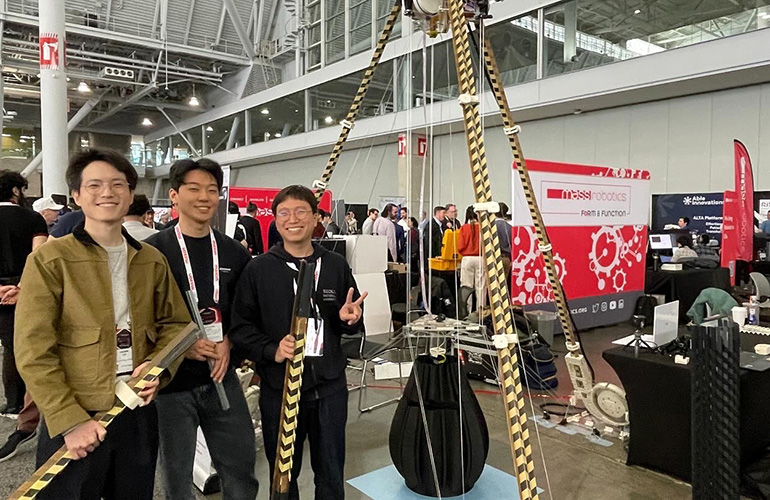|
Listen to this article |
MassRobotics announced the winners of its second Form & Function University Robotics Challenge at the Robotics Summit & Expo last week. A panel of judges at the show picked Seoul National University as the first-place winner.
Twelve teams from across the globe showcased their robotics and automation projects for the challenge and competed for cash prizes. Competitors in the challenge are tasked with creating a robot that looks good, the “form” part, and that works, the “function” part.
The Seoul National University’s team built a deployable gantry system for the challenge. Visitors at the show could watch the system 3D print on the concrete floor of the convention center. You can check out the team’s project flyer here (PDF).
The judges awarded the Harvard University team second place with its Hydrocube capable of moving particles in liquid without touching them. The Wentworth Institute of Technology’s team won third place with its underwater inspection robot.
The University of British Columbia team won this year’s Audience Choice award. The team created a robot that can detect and monitor embers after wildfires.
MassRobotics says it leaves the challenges tasks intentionally vague to encourage creativity and innovation from the teams that compete. MassRobotics partners AMD, Analog Devices, Danfoss, Festo, Lattice Semiconductor, Mitsubishi Electric, Novanta, Solidworks, and igus donated the components and software used in the challenge. This allowed the teams to utilize some of the latest and greatest offerings in the industry.
About the winning team
The Seoul National University’s team was made up of Sun-Pill Jung, Jaeyoung Song, Chan Kim, Haemin Lee, Inchul Jeong, and Kyu Jin Cho. The team set out to build a highly rigid extendable boom using a corrugated structure for a deployable mobile gantry robot system.
The team wanted to address future space and transportation issues. While NASA has early plans for taking the first steps towards creating structures on celestial bodies, it’s still a relatively unexplored area of innovation.
The Seoul National University team created a deployable mobile gantry robot system with a hang 3D printer. The structure uses Slide-and-Fold Enabling (SaFE) joints to create extendable legs. This allows the team to use the 3D printer to create a range of objects of different shapes and sizes.






